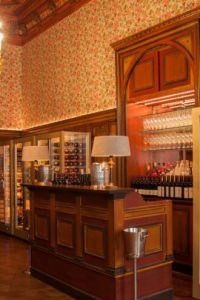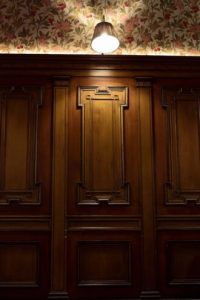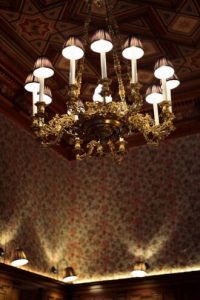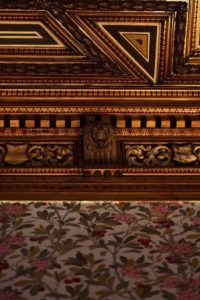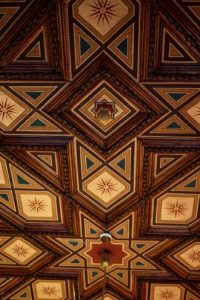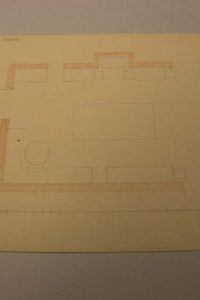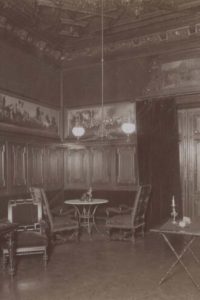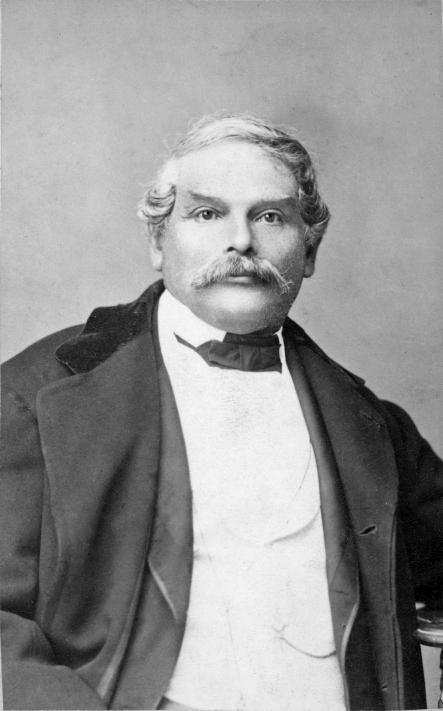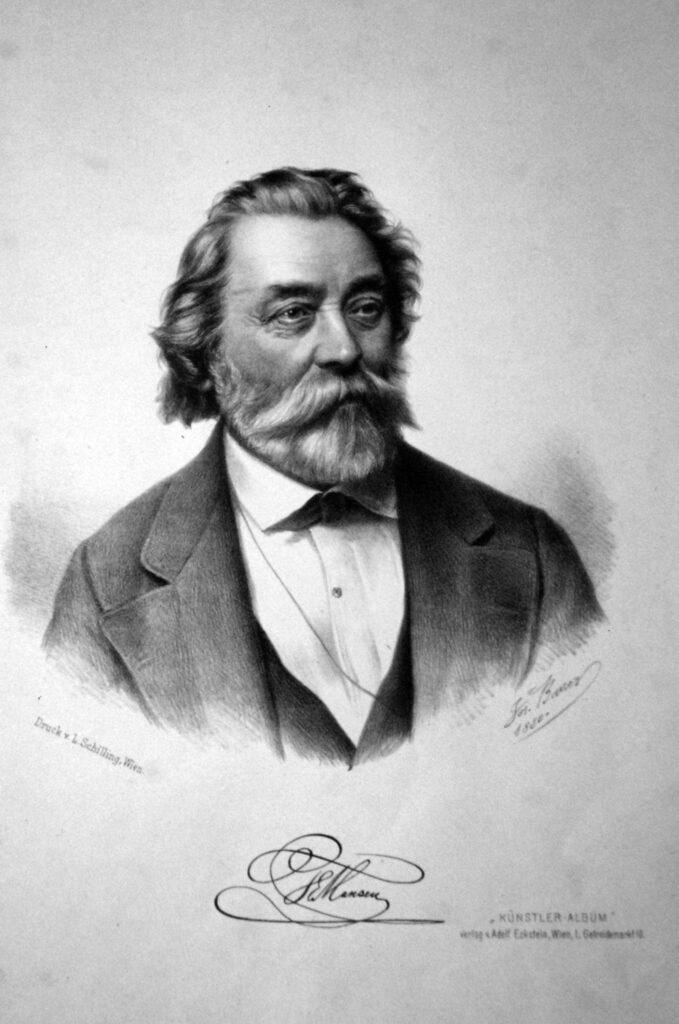Private Bar
As an entrance to the “Blauer Salon”, it was the perfect place to welcome guests in a cosy bar atmosphere or to end an event in comfort.
Startseite » Private Bar
Private Bar
Todescos Billard Room
Eduard von Todesco’s billiard room, which also served as a passage to the study, was designed by Theophil Hansen with a matching wooden ceiling, wainscoting, red walls, and green upholstered benches.
The central piece of furniture was a billiard table, with additional seating areas in front of the windows. While no original furniture plans have survived, a photo from around 1870 gives a good idea of the room’s layout.
The ceiling design from the study, featuring a large central star and four smaller stars in the corners, was repeated in a smaller pattern throughout the billiard room.
